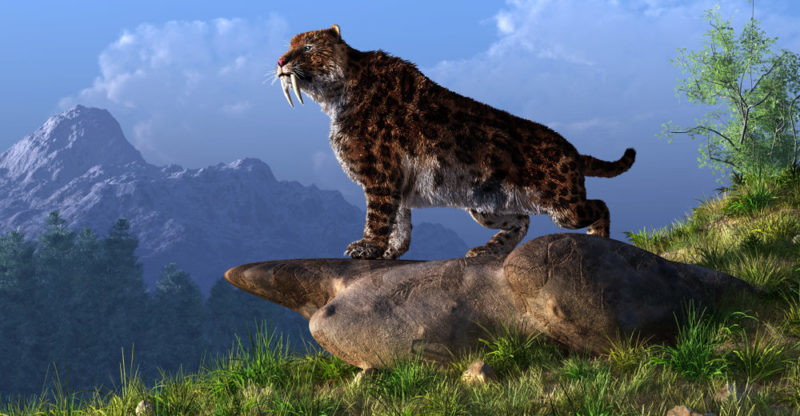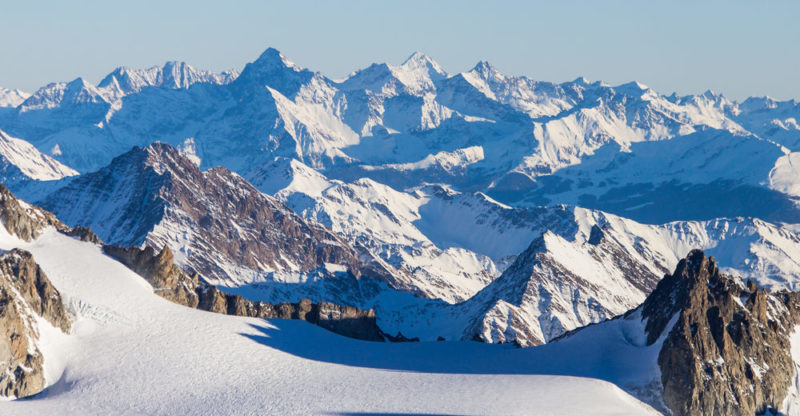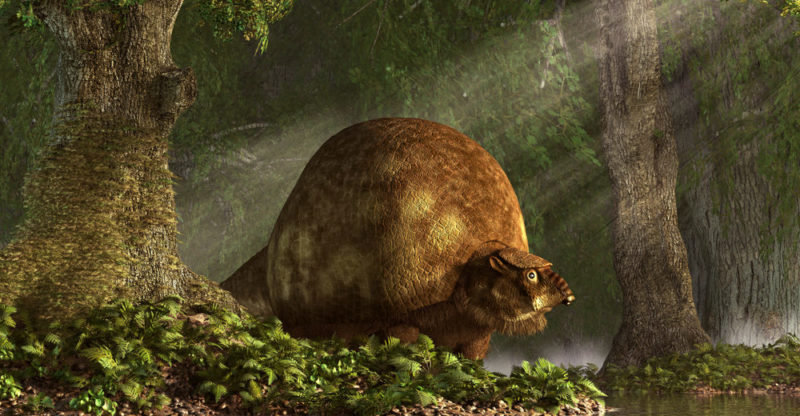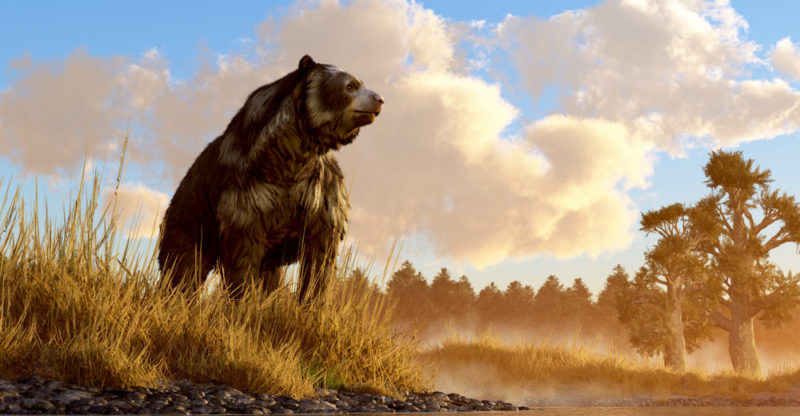We explain what the Cenozoic Era is, how it is divided and why it is so important. Also, what are its characteristics, flora and fauna.
What is the Cenozoic Era?
What is known as the Cenozoic or also Cenozoic Era (and formerly as the Tertiary Era) is the last division of the geological time scale , within what makes up the Phanerozoic Eon (started 541 million years ago and culminates in our present days ), along with the Paleozoic and Mesozoic eras .
The Cenozoic Era began with the extinction of the dinosaurs approximately 66 million years ago. Its name comes from the Greek words kainos ("new") and zoe ("life", "animal"), meaning "new life".
It is also known as the "Age of mammals" , since this was the privileged way of life throughout its 66 million years of duration. Furthermore, it is the Age in which the human being made his appearance .
Was earlier
In the Mesozoic Era the world was populated by dinosaurs . They were huge lizards that reigned for one hundred and sixty million years.
However, they abruptly became extinct at the end of the Cretaceous period (the last of the Mesozoic era, after the Triassic and Jurassic ).
This was the era in which the first mammals emerged, and in which the supercontinent of Pangea began to separate and give rise to the geography we know today.
Cenozoic Era Division

The Cenozoic Era was divided into three periods, each subdivided in turn into 2 or 3 epochs and these into a varied number of ages. Everything is detailed below:
IT WAS CENOZOIC
- Paleogene period. It begins 66 million years ago and lasts until approximately 28.1 million years ago. It is divided into three epochs:
- Paleocene. From 66 million years ago to 59.2 million years ago, including the Danish, Selandian and Thanetian ages.
- Eocene. From 56 million years ago to 38 million years ago, including the Ypresian, Lutetian, Bartonian, and Priabonian ages.
- Oligocene. From 33.9 million years ago to 28.1 million years ago, including the Rupelian and Chattian ages.
- Neogene Period. It begins 23 million years ago and ends approximately 3.6 million years ago. It comprises two epochs:
- Miocene. From 23 million years ago to 7.2 million years ago, spanning the Aquitaine, Burdigalian, Langhian, Serravalian, Tortonian and Messinian ages
- Pliocene. From 5.3 million years ago to 3.6 million years ago, spanning the Zanclian and Piacenzian ages.
- Quaternary Period. From 2.5 million years ago until the emergence of human civilization (and the beginning of History ), spanning two eras:
- Pleistocene. From 2.5 million years ago to about 126,000 years ago, spanning the Gelasian, Calabrian, Ionian or Middle Pleistocene and Tarantian or Upper or Late Pleistocene ages.
- Holocene. From approximately 11,700 years ago to the present, without ages.
Formerly, the Paleogene and Neogene periods were joined in a " Tertiary Period ". But that consideration is no longer in use.
Cenozoic geological features

During the Cenozoic, the supercontinents of Gondwana and Laurasia separated. In other words, the continents were acquiring their current orientation and position . The Atlantic Ocean widened and then the two American continents (North and South, with the creation of the Central American Isthmus) joined.
Other important geological events during the Cenozoic were the collision between the Indian subcontinent and the Asian continent 55 to 45 million years ago. Thus the formation of the Himalayas was unleashed.
Similarly, Arabia collided with Eurasia 35 million years ago . As a consequence, the Sea of Tethys was permanently closed , and the orogeny of the Alps took place. Those processes continue today.
Climate of the Cenozoic Era
The Cenozoic climate has been one of long-term cooling . It was initially due to the solar blockage that produced the ash from the K-Pg Event (the extinction of the dinosaurs) in the atmosphere .
Later it continued due to the distance from the continents and the appearance of the Antarctic Circumpolar Current , which allowed the polar waters to cool . The same happened with the Humboldt currents and the Gulf with the Arctic region .
The "Ice Ages"

The Quaternary is understood as a period of fluctuations in the ice level in the polar regions , more or less stable cycles that oscillated 100,000 years. Some estimates indicate that there were around 80 glaciations throughout the period, generating glacial periods or “ice ages”.
During the ice ages, the ice spread, the seas fell, and the global climate cooled and dried . But in the interglacial periods, the cold diminished and the ice receded, releasing water into the oceans .
In the last million years, 4 major glaciations would have occurred , with their respective intermediate periods: Günz Glaciation (1.1 million years ago), Mindel Glaciation (580,000 years ago), Riss Glaciation (200,000 years ago) and Würm glaciation (80,000 years).
Flora of the Cenozoic Era

Thanks to the disappearance of the dinosaurs, in the Cenozocio the vegetation could expand and diversify , especially during the first times, more humid and warmer. Later, the forests began to give way to drier and more arid areas. Thus arose grasses and herbs.
Finally, the human hand made itself felt in this area: edible and cultivable species began to predominate in many aspects. This was due to human intervention and the development of agriculture.
Continental separation also allowed for greater diversification . Thanks to the isolation of continental ecosystems for thousands of years, many species gave rise to new ones.
Fauna of the Cenozoic Era
At the beginning of the Era, the surviving species of the Cretaceous-Paleogene Mass Extinction were mostly small mammals , reptiles and birds . That is why they were the ones that proliferated the fastest and fastest, stripped of their great predators .
Among the mammals were rodents and small equines . Their greatest predators became large flightless birds, such as those belonging to the genus Titanis .
In Neogene the first primates appeared , and among them the first hominins , ancestors of the human race. Cattle, antelope, gazelle, and other large mammals flourished during this period, as did aquatic mammals, such as whales .
Finally, the Quaternary was characterized by the presence of large feline predators , such as saber- toothed tigers . Woolly mammoths, adapted to ice ages, also proliferated.
The presence of humans influenced the fate of many of these species . Some of them found their extinction due to the increase in hunting by this new species that little by little became the dominant one on the entire planet .
Evolution of Humanity

In the Quaternary period humanity makes its entrance . It is the fruit of a slow process of evolutionary changes from the first hominins that emerged on the African continent : species of the genus Australopithecus and later Homo .
When they migrated to Eurasia and the Middle East, they gave rise to new human species. The last were Homo neanderthalensis ("Neanderthal man"), Homo denisovensis ("Denisova hominid") and Homo sapiens , the only species not extinct today and the only one we currently understand as "Humanity".
Disuse of the term "Tertiary"
Today the name Cenozoic Era is preferred for the total time span between the extinction of the dinosaurs and the present, rather than the Tertiary Era. This is because the previous Eras are no longer referred to as Primary and Secondary.
Furthermore, the Cenozoic period, which was commonly called the Tertiary Period, is preferred to handle as two distinct periods: Paleogene and Neogene. However, the name of the Quaternary remains.
Importance of the Cenozoic Era

The Cenozoic Era offers us the explanation of how the prehistoric world came to be as it was at the beginning of our civilization. Therefore, it is the context of the beginning of our history as a species .
The geological, climatic and biotic changes that occurred during its 66 million years directly define what we find today in the various ecosystems. They are also the source of the resources of the soil in which we sow and of the seas from which we feed.
On the other hand, the Cenozoic represents a re-flowering of life in a new key : mammals. From them eventually the human species arose.
The above content published at Collaborative Research Group is for informational and educational purposes only and has been developed by referring reliable sources and recommendations from experts. We do not have any contact with official entities nor do we intend to replace the information that they emit.
MA student of the TransAtlantic Masters program at UNC-Chapel Hill. Political Science with a focus on European Studies. Expressed ideas are open to revision. He not only covers Technical articles but also has skills in the fields of SEO, graphics, web development and coding. .
Leave a reply
Your email address will not be published. Required fields are marked *Recent post

Sport: What Is It, Types, Risks, Features, Characteristics and Examples

Dogs: Emergence, Features, Characteristics, Feeding and Breeds

Story: Definition, Elements, Structure, Features and Characteristics

